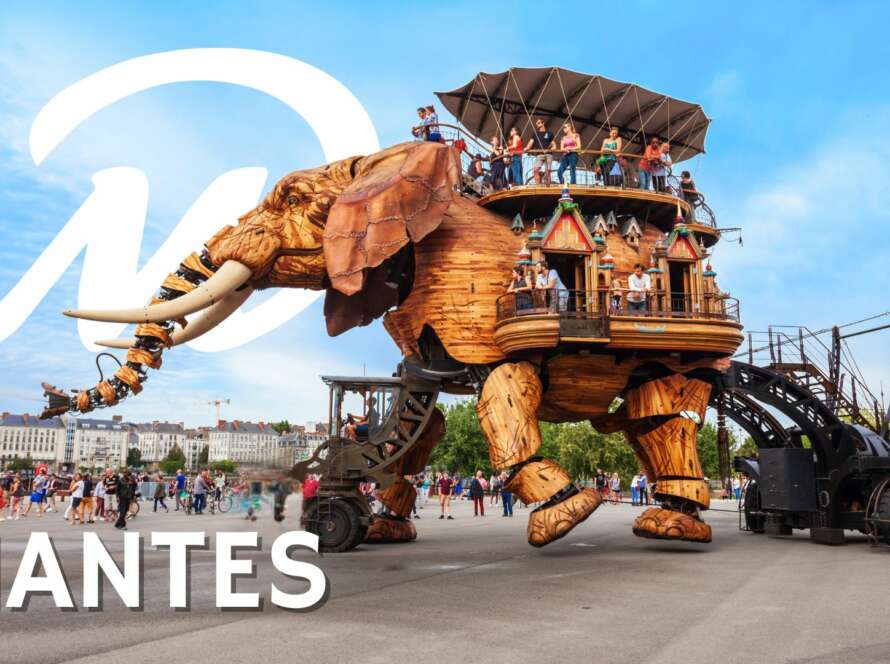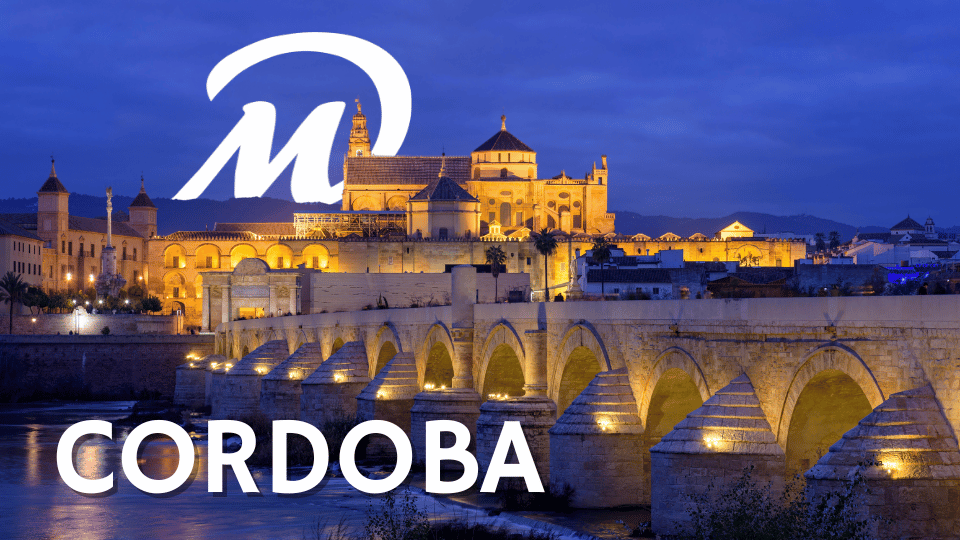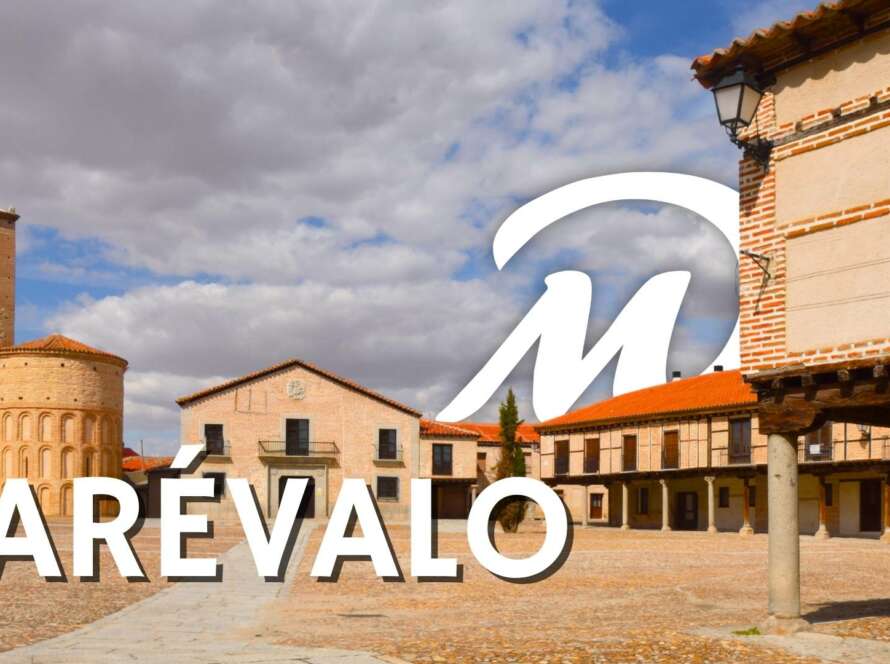“Everything here is fictitious, except the setting. No one could invent a city like Seville” And we couldn’t agree more with Arturo Pérez Reverte: Seville is magical, it is unique. The Andalusian capital has an immense history, reflected in its streets, monuments and culture, marked by a turbulent history full of light and shadow. Discover with DareMapp these things to do in Seville, one of the most beautiful cities in our country, and the cradle of the multiculturalism that the Iberian Peninsula has experienced.
In this blog we show you some of the monuments, points of interest and neighbourhoods that you should not miss during your visit to Seville. In addition, this guide includes the link to our app DareMapp, where you will find a complete and gamified tourist guide of Things to do in Seville and other cities, to discover every corner of them using just your smartphone. Are you in?
Discover with DareMapp things to do in Seville, one of the most beautiful cities in our country and in the Iberian Peninsula.
Looking for things to do in Seville? Start here!
💃 Seville is meant to be lived, not just read about.
Stop planning and start discovering Seville today.
With the DareMapp app, it’s easy: enjoy the COMPLETE GUIDE ON YOUR PHONE and explore every corner at your own pace, with no schedules or hassle.
Things to do in Seville: History and origins
Seville, one of Spain’s most charming and historically rich cities, is a true cultural treasure located in the heart of Andalusia. Known for its vibrant life, flamenco art and stunning architecture, Seville offers a wide range of attractions to explore. If you’re wondering things to do in Seville, here’s a deep dive into its history from its origins to the present day.
Let’s explore the must-try things to do in Seville.
Ancient Origins
Seville’s history begins long before the arrival of the Romans, with traces of Phoenician and Tartessian settlements. However, it was under the Roman Empire that Seville, then known as Hispalis, began to take shape as an important city. During this period, Seville flourished as an urban and commercial centre, leaving behind important archaeological remains such as the aqueduct and several mosaics that today are key to understanding things to do in Seville.
The Splendour of Al-Andalus
With the arrival of the Muslims in the 8th century, Seville entered one of its most glorious eras. Renamed Ishbiliya, it became one of the most important cities of Al-Andalus. During this time, masterpieces of Islamic architecture were built, many of which can still be visited today and are essential to any list of things to do in Seville. The Giralda, originally part of the city’s great mosque and now the bell tower of the Cathedral, is one of these iconic legacies.
Renaissance and the Golden Age
After the Reconquest in 1248 by Ferdinand III of Castile, Seville maintained its relevance, especially after the discovery of America in 1492. The city became the administrative centre and departure point for voyages to the New World. This golden age brought with it a boom in the construction of magnificent Renaissance and Baroque buildings, such as the Archivo de Indias, which is a must-see and must-do if you’re wondering things to do in Seville.
19th and 20th centuries
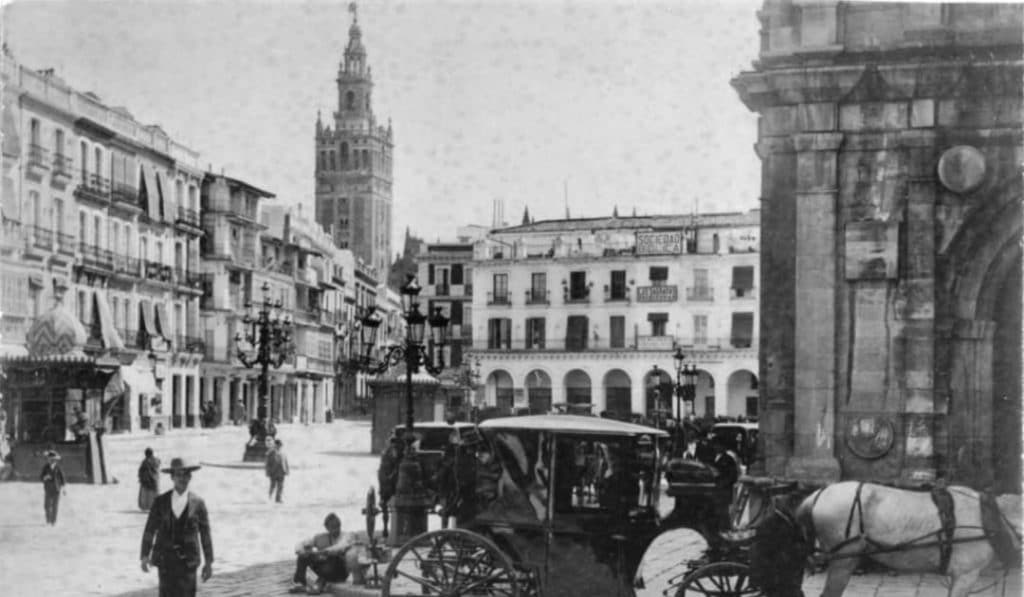
During the 19th and 20th centuries, Seville experienced economic ups and downs, but continued to be a cultural and artistic centre. The Ibero-American Exposition of 1929, which sought to improve relations between Spain, Portugal and the nations of the Americas, was a transformative event for the city. For this occasion, numerous buildings were constructed and areas were remodelled, including the famous Plaza de España, another of the things to do in Seville.
💡DID YOU KNOW… Seville has over 3,000 years of history?
With the app DareMapp, explore the city and discover its best stories and facts — all right from your phone, nice and easy.
Seville Today
Today, Seville is a vibrant mix of past and present. The city is not only famous for its rich history and architecture, but also for its contemporary culture. Semana Santa and the Feria de Abril are two of Seville’s most important and spectacular cultural events, attracting thousands of visitors each year. In addition, the city’s gastronomic offer, ranging from tapas to innovative haute cuisine, perfectly complements the experience of discovering things to do Seville.
From exploring the ancient Jewish quarter of Santa Cruz to enjoying a flamenco show in Triana, Seville offers countless opportunities to experience its unique blend of culture, history and tradition. Every corner of this city breathes the spirit of its colourful past, making every visit an unforgettable adventure.
So, if you are planning a visit and want to know what things to do in Seville, get ready to immerse yourself in a city that lives and celebrates its history every day, offering visitors a window into its glorious past and vibrant present.
Things to do in Seville
The capital of Andalusia is one of the largest cities in Spain, both in terms of population and tourism. Its Holy Week, the April Fair and, of course, its monuments and history, make it one of the favourite destinations for tourists, both national and foreign. To walk through its streets is to lose oneself in the history of Al-Andalus, how the Middle Ages changed the city completely or to understand the deep-rootedness of its people in the neighbourhoods.
Here is a small guide for the things to do in Seville, although you can adapt it to the time you are going to spend in the city of the Guadalquivir.
Go to Plaza de España
It is impossible not to link the word “Seville” to its most imposing square. Considered one of the most beautiful monuments in Europe, this imposing semi-circular palace was created in 1929 by Aníbal González for the Ibero-American Expo hosted by the city.
Peculiar and unique in all its aspects, its tiled benches arranged along its length, where all the provinces of our country are represented (and where all national visitors have their photo taken), as well as its navigable canal and the arcaded gallery that separates the square from the building, where its majesty and the local folklore invite you to stroll and enjoy a unique moment.
This square, declared an Asset of Cultural Interest, is located inside the Maria Luisa Park, the largest park in the city, and where you should lose yourself to enjoy the unique aromas of the city.
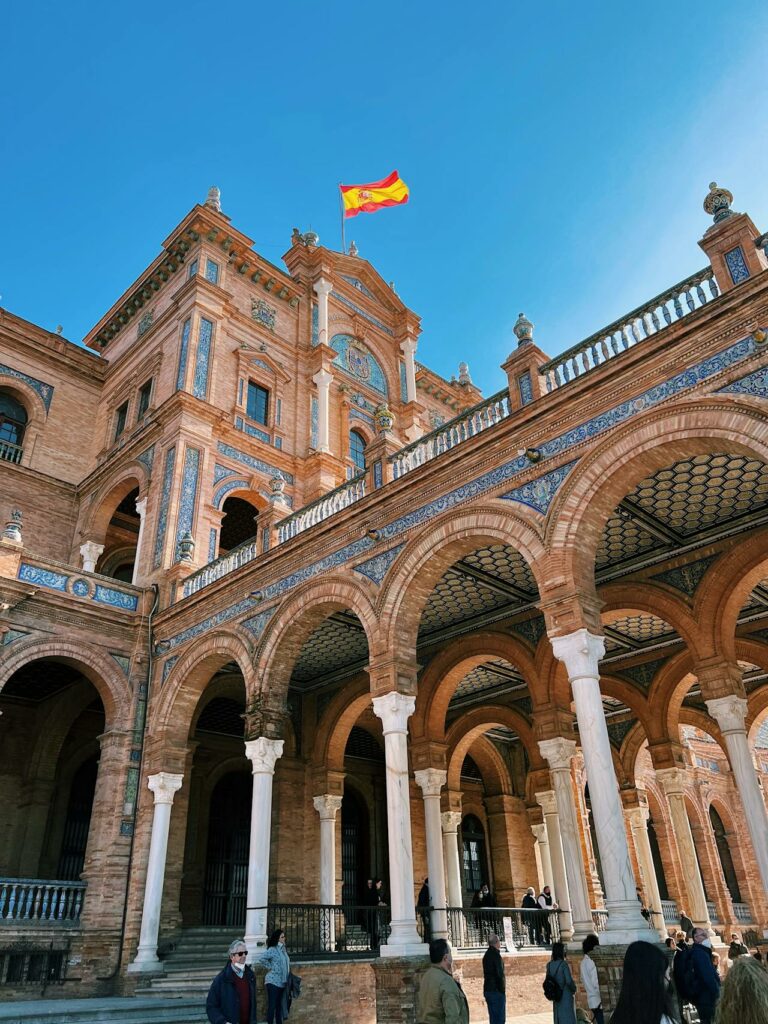
💃🎉💃🎉 HEADING TO THE FAIR? DON’T FORGET… to bring at least a guide on your phone.
With the DareMapp app, Seville and its Fair are always within reach. Explore the city with a COMPLETE GUIDE right from your smartphone.
Visit The Cathedral and La Giralda
An imposing construction, built on the foundations of the old aljama mosque of the city built in 1198. From that mosque both the famous Giralda and the Patio de los Naranjos have been preserved, having undergone various modifications throughout history. Its construction evoked the grandeur that the city projected to the rest of the kingdom. Thus, in the mid-15th century, construction began on the Gothic church we know today, which has undergone modifications adapted to the different architectural styles.
Although absolutely the whole Cathedral is a magnificent work part of the things to do in Seville, complete and a step through history, it is worth highlighting its tallest and most characteristic structure: La Giralda. The current bell tower of the Cathedral shows the passage of different eras, as well as being visible from much of the city for its more than 100 meters high.
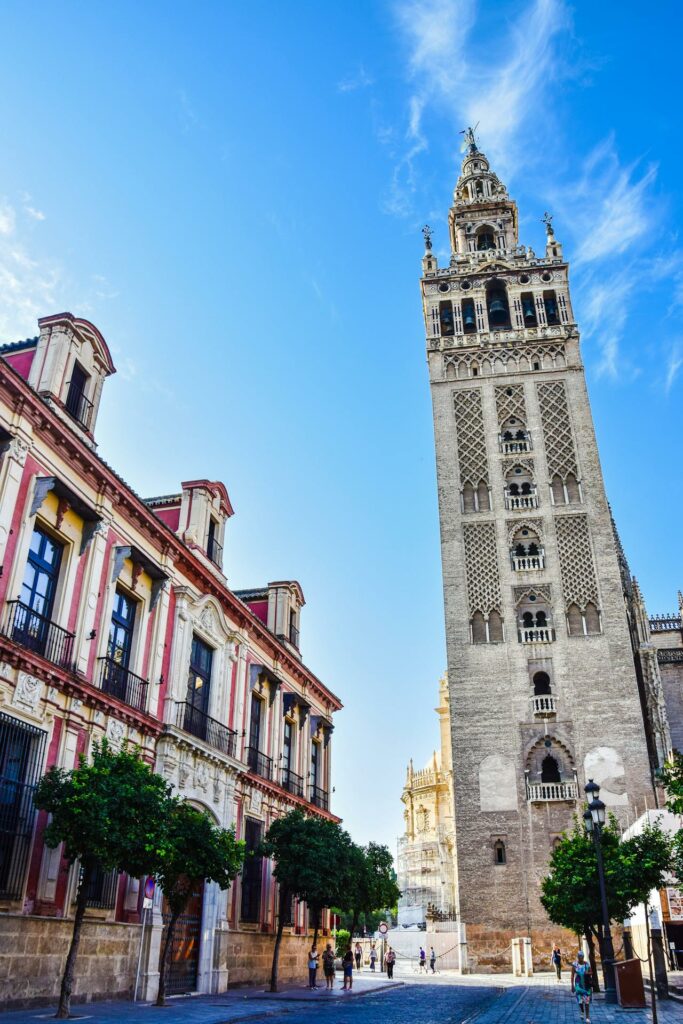
Inside the Cathedral, we can observe the mixture of cultures in its architecture. Located on the site of the city’s ancient aljama, it combines the remains of the aljama with later constructions created under Christianity, giving rise to a unique mixture that is visible from the outside. The chapels of the central nave are spectacular, where the royal chapel with the patron saint of Seville, the Virgen de los Reyes, stands out.
Next to the Cathedral, there are two other monuments visits among the things to do in Seville that have also been named UNESCO World Heritage Sites: the Alcázar and the General Archive of the Indies. Don’t hesitate to visit both, the former for being the oldest Royal Palace in Europe (with a mixture of Arabic style and Gothic constructions), and the latter for housing the history of the Spanish territories in America.
Get your Seville Highlights Pass to skip the lines here.
And if you want to add a special touch to your visit, book your Flamenco Spectacle & Alcázar Combo here!
Go to The Torre del Oro (Golden Tower)
A classic image of Seville and the Guadalquivir, its name has many legends, and to this day remains somewhat controversial: some think it was covered with golden tiles, others that it was just ochre paint. In either case, its unique colours made it an icon and guide for the sailors of the Guadalquivir.
This is a defensive tower on the banks of the river. Created in the Arab period, it underwent two modifications until its current appearance. Its name is believed to be due to the sparkles caused by the tiles that once covered it. Declared a historical monument in 1931, it has a naval museum inside.
Explore The Maestranza
The bullring of the Sevillian capital is one of the most important in the world of bullfighting, both in terms of dates and history. Managed by the Real Maestranza de Caballería, it is a very curiously shaped bullring created over a period of 120 years, due to the situations of the time. Until then, bullfighting festivities were held in the different bullrings of the city.
Nowadays, the bullfights take place from Easter Sunday until September, with special emphasis on the Feria de Abril (April Fair).

Walk to the Triana neighbourhood
“I’m from Triana, not Seville”. This phrase can be heard a lot from the inhabitants of this neighbourhood, one of the most historic in the city. With a working class and seafaring tradition, its streets show the most typical culture of the land, a unique art that will surround you and will not let you escape from it.
The neighbourhood was born as such later than the rest of the city, since it was originally an external settlement. Its working-class and, above all, seafaring tradition made it the historical epicentre of the Discovery of the Americas.
The idiosyncrasies of its inhabitants make it the epicentre of a unique culture. This feeling of belonging to the neighbourhood is transmitted in the form of colour, art and music. Discover its chapels, its markets and the unique people who live in its streets. We assure you that this is a unique neighbourhood a great visit among the things to do in Seville, so don’t miss the opportunity to cross the bridge and walk around San Jacinto.
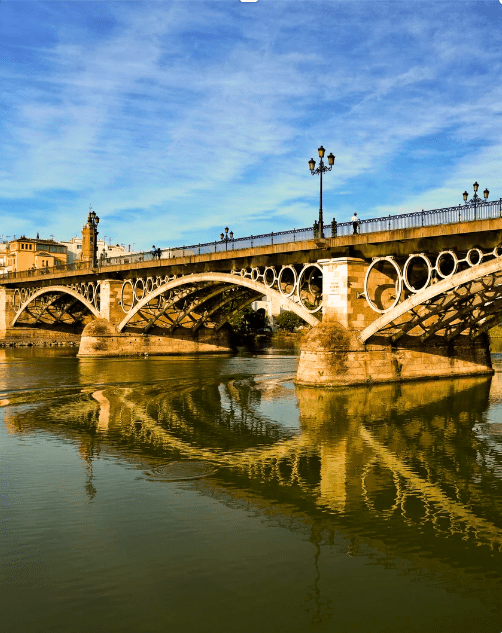
GETTING LOST IN SEVILLE has its charm ❣️… but finding everything is even better.
With the DareMapp app, every spot is right on your phone — no detours.
Visit the Plaza de la Encarnación

Perhaps because of this name, it does not stand out in the same way as everyone knows it today: “Las Setas de Sevilla” (the Seville Mushrooms). In the heart of the historic centre of Seville, the wooden structure by Jürgen Mayer created in 2010 forms a unique habitat , a top visit among the things to do in Seville.
Las Setas (or Metropol Parasol, its original name) were built to revitalise a square with a historic market, demolished by the city’s development. After many years of neglect in the area, in 2004 it was proposed to create a new space to revitalise the area and give it back the splendour it deserves.
And of course they have succeeded: it has become an icon of modern Seville, as well as an epicentre of tourism, gastronomy and enjoyment for the people of Seville. It has a renovated food market, numerous restaurants both in Las Setas and in the surrounding area, as well as an upper walkway where you will find the best panoramic views of the city.
Check your tickets here.
Explore Calle Sierpes, Campana and Carrera Oficial (Official Race)
For the Semana Santa faithful, these streets are very special: Plaza de La Campana is the start of the Carrera Oficial, the obligatory route for all the brotherhoods during their penitential procession. It continues along Calle Sierpes towards the Cathedral, giving rise to a long, highly decorated avenue during Holy Week.
The rest of the year, Calle Sierpes is one of the commercial epicentres of the city, where you will find clothing shops, restaurants and a large number of people on a daily basis. These streets are also an important place to visit in Seville, so take the opportunity to sample the city’s gastronomy in the area.
Enjoy Dueñas Palace
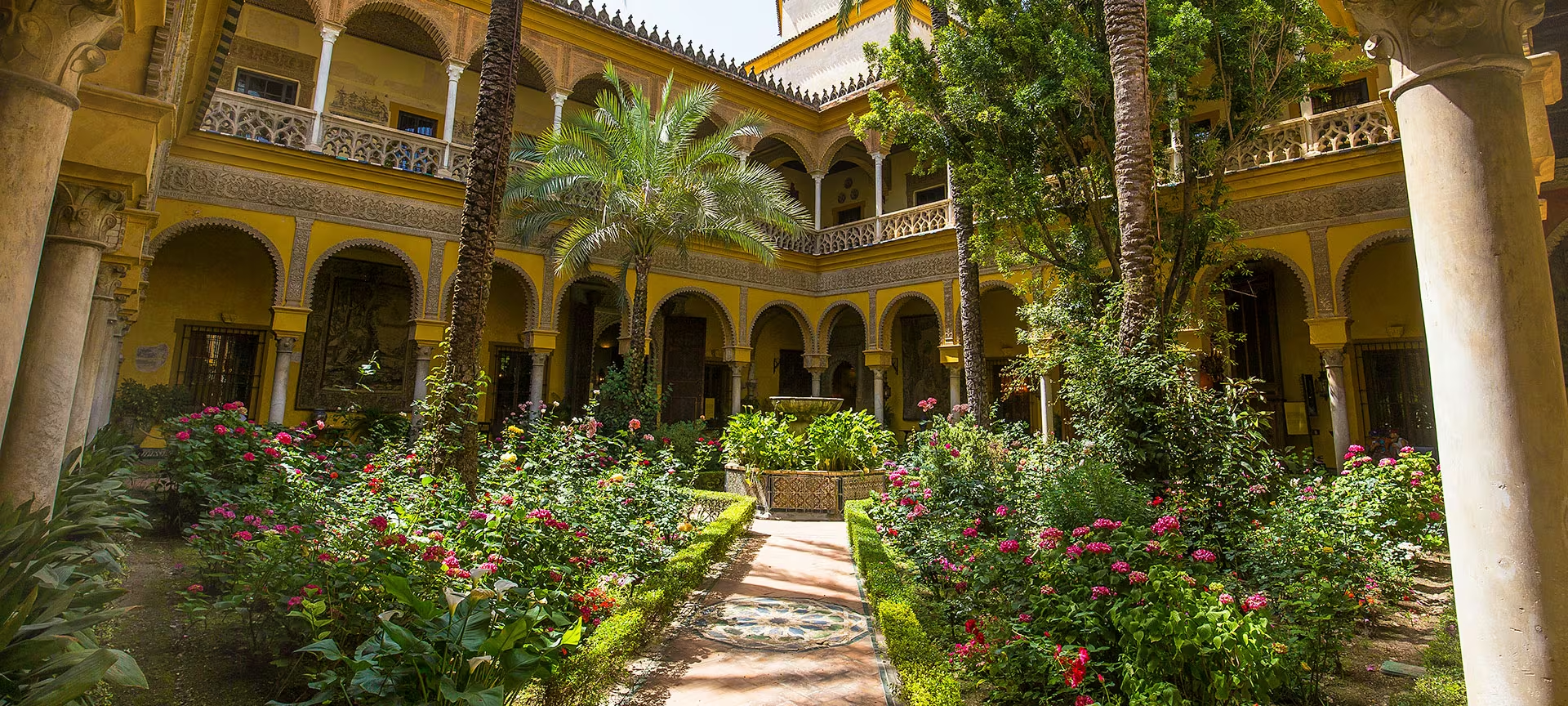
The Alba family is one of the most historic and well-known noble families in Spain. The late Duchess of Alba was a much loved public figure in Seville.
This palace has belonged to the family since the 18th century, and since then it has lived different stages: from noble palace to neighbourhood courtyard. Until Cayetana de Alba’s death, this was her habitual residence, which kept her close to her Brotherhood of the Gypsies, of which she was a devotee and benefactor of the Brotherhood. In addition, there was a time when the Palace was a meeting place for European royal and noble families, which makes it a Palace principal among the things to do in Seville and a necessary stop on your tour. Check your tickets here.
Go to the Macarena
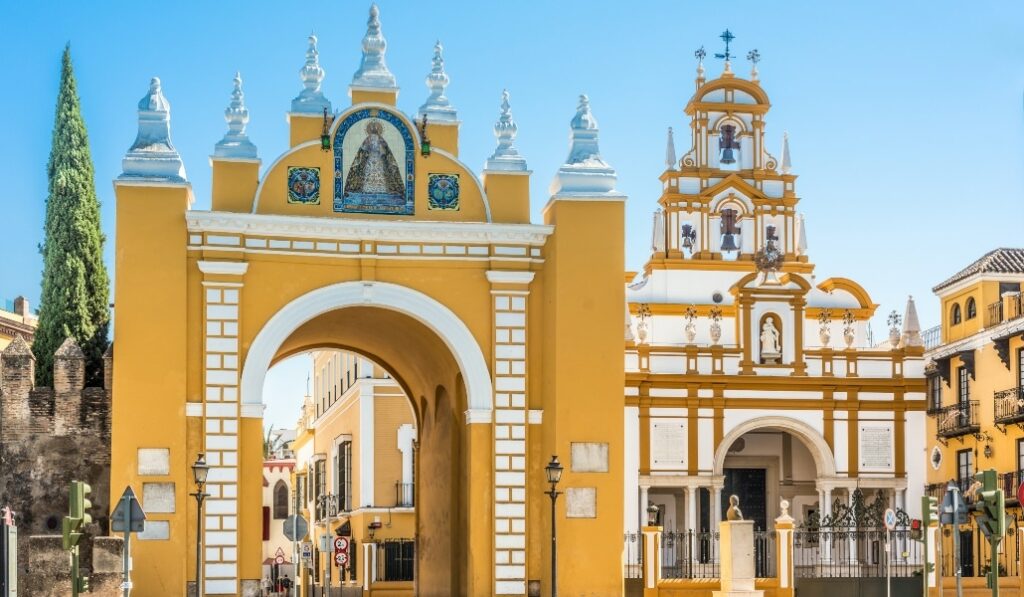
Located in the northern part of Seville, the district of La Macarena is named after the Muralla gate that is located there. It was one of the entrances to the city walls of Seville, dating back to the Arab period. Both the gate (restored centuries later in the neoclassical style) and a section of the wall with seven towers are still preserved today. Both make up the largest section of the things to do in Seville.
Next to the gate is the Basilica de la Hermandad de la Macarena, where you can visit the Virgen de la Macarena, one of the most popular images in Spain. The chapel of the Virgin is spectacular, and you will be able to get a close-up view of a carving with the features of a sorrowful Virgin that set a style.
Tips to travel with peace of mind
When everything is ready — flights, hotel, itinerary — there are only two more things you need to travel worry-free: a good internet connection and reliable travel insurance.
✔ Get an international eSIM already set up on your phone. No need to change your SIM card, search for Wi-Fi, or pay for roaming. Activate it before your trip and enjoy unlimited data from the very first minute, wherever you are.
✔ Take out travel insurance that includes medical assistance 24/7, coverage for cancellations, theft, and — most importantly — advance payment of all medical expenses without you having to pay, wherever you are. Because in a new country, what matters most is feeling safe. Moreover, DareMapp offers you a 5% discount.
Both services can be arranged online in less than 5 minutes, with no paperwork required.
Don’t leave it to the last minute!
👉 Activate your Holafly eSIM at the best price here.
👉 Take out your travel insurance with IATI and get a 5% discount.
Other Things to do in Seville
Seville is full of hidden corners, all of them to be discovered. If you want to know more things to do in Seville, here are some ideas, as well as the link to our app DareMapp, where you can enjoy many gamified tourist guides for this and other cities in the country.
Some other things to do in Seville are the following:

Visit the Capilla de los Marineros (Triana)
In the heart of the Triana neighbourhood, the headquarters of the Hermandad de la Esperanza de Triana brotherhood stands as the temple of the Marineros. Next to the banks of the Guadalquivir, the Chapel houses the Esperanza de Triana, as devout as the Macarena, as well as the Cristo de las Tres Caídas (Christ of the Three Fallen). Next to the chapel is the Museo de la Hermandad, where you can buy some souvenirs.
Calle Pureza (where it is located) is one of the most special streets. In the early hours of Good Friday morning it becomes a witness to the Brotherhood’s penitential procession, and is one of the most interesting places to visit during Holy Week.
💫 You’re just one click away from turning reading into adventure.
🗺️Your route through Seville, with DareMapp
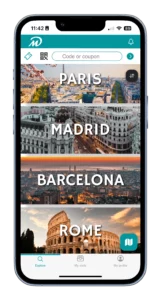
Go to the Church of El Salvador
Located just a few minutes from the Town Hall, this is a collegiate church to visit in Seville, whose construction is also linked to the Muslim period. Built in the Roman period, it was the first aljama of the city (until the construction of the aljama Mayor of the Cathedral). After the arrival of the Christians, they reconverted the temple, changing the orientation and distribution, but respecting the spaces.
At the end of the 17th century, it was decided to rebuild the church, but when it was almost finished, the church collapsed, and so in the face of the discouragement, it was rebuilt years later. Nowadays, it is one of the most iconic squares in the city.
Explore the Alcazar of Seville
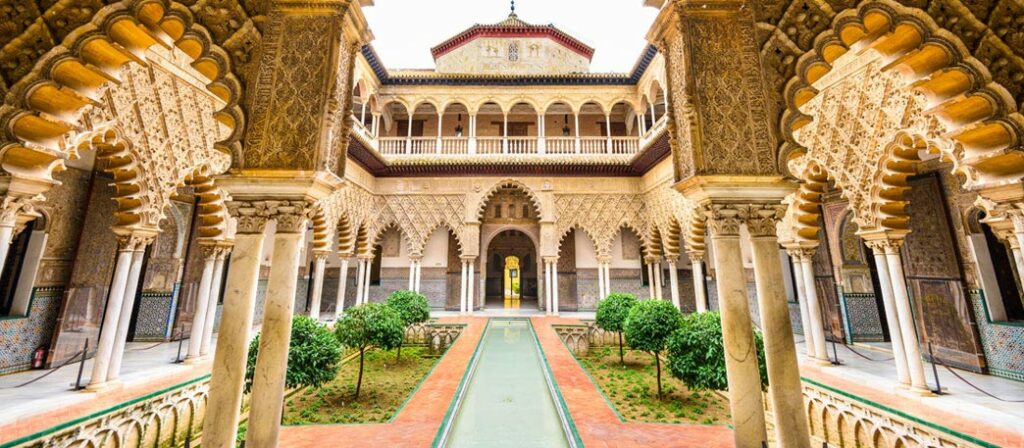
The oldest Royal Palace in Europe is located in Seville. It is the Alcazar, a palace dating from the Muslim period, with numerous modifications and subsequent improvements, giving it a new religious orientation and housing within its walls the two worlds that in the Middle Ages fought for control of the city.
A must-see and must-do among the things to do in Valencia, is visiting the Palace part of the UNESCO World Heritage Site, and enjoying its gardens and courtyards is a complete enjoyment of the things to do in Seville.
Walk by Arenal and Santa Cruz neighbourhoods
Two of the city’s most iconic neighbourhoods: the former stretches along the banks of the Guadalquivir, hiding La Maestranza and providing an entrance to the city from the river. The second was the former entrance to the Seville Wall, and has become a neighbourhood with colour, aroma and art. Its narrow streets, orange trees and hidden squares are one of our things to do in Seville. Check your tickets here.
Visit the Museo del Baile Flamenco (+ Show)
Immerse yourself in the passion of flamenco at this museum, which showcases the history and evolution of this art form. The experience includes a live flamenco show, making it one of the most authentic things to do in Seville. Check your tickets here.
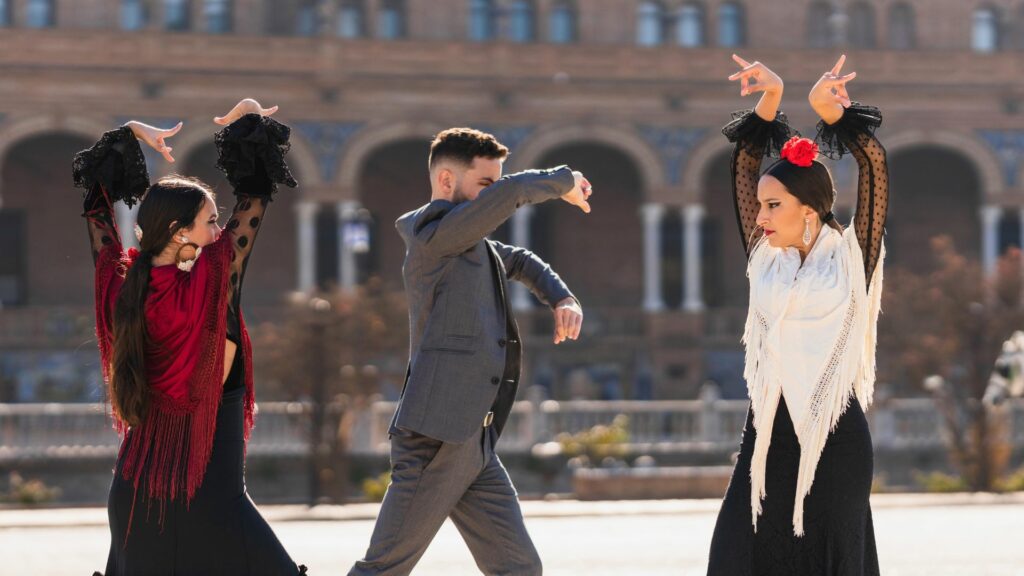
Explore the Carida’s Hospital
This historical and artistic gem is known for its stunning Baroque architecture and impressive collection of paintings. A visit to the Hospital de la Caridad is one of the most meaningful things to do in Seville for those interested in art and philanthropy. Check your tickets here.
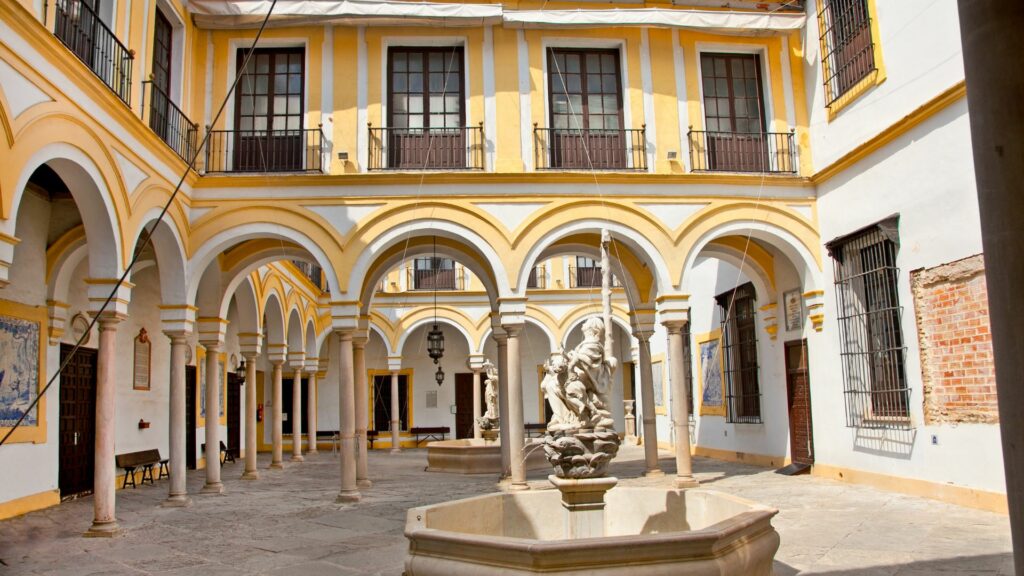
Go to the navigation pabillion
Discover Seville’s maritime history at this interactive museum, which tells the story of explorers, shipbuilding, and the city’s connection to the Age of Discovery—a unique and educational option among the things to do in Seville. Check your tickets here.
Discover the illusion museum
For a fun and interactive experience, visit the Museo de las Ilusiones, where optical tricks and mind-bending exhibits make for a great time. One of the most entertaining things to do in Seville, especially for families and friends. Check your tickets here.
Have fun at the magic island
Looking for thrilling things to do in Seville? Head to Isla Mágica, a theme park with roller coasters, water rides, and pirate-themed attractions—perfect for a day of fun! Check your tickets here.
Get in the seville acuarium
Explore the marine world at the Acuario de Sevilla, where you’ll find sharks, sea turtles, and exotic fish. One of the best things to do in Seville for families and ocean lovers. Check your tickets here.

Enjoy the Guadalquivir River Cruise
Enjoy Seville from a different perspective with a river cruise on the Guadalquivir. This relaxing experience includes a drink and meal, making it one of the most scenic things to do in Seville. Check your tickets here.
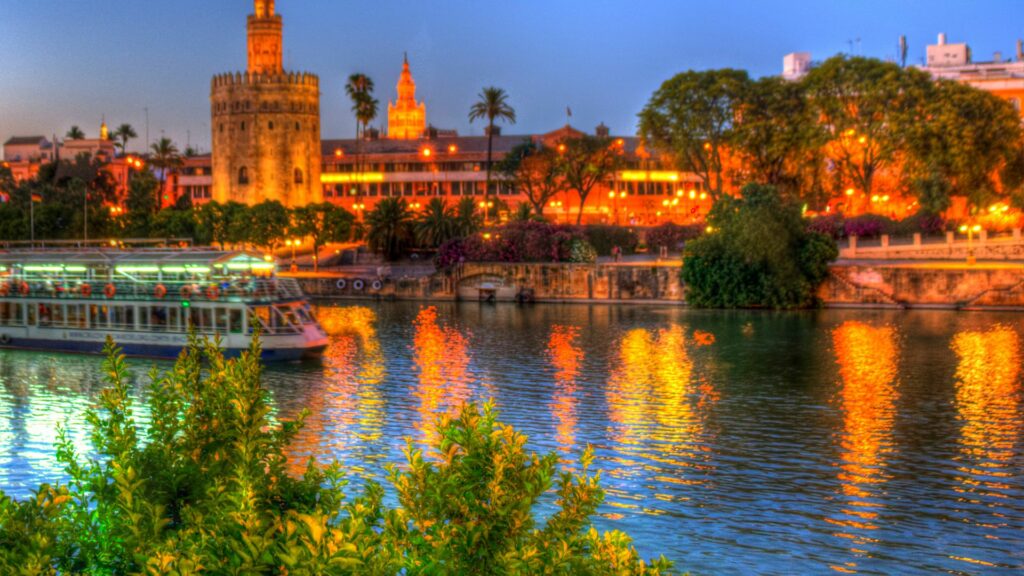
Did you know scenes from Star Wars and Game of Thrones were filmed in Seville?
With the DareMapp app, explore the real-life locations of these famous productions as you visit the city right from your phone.
Visit the Castillo de Almodóvar
Step into a real-life fairytale at Castillo de Almodóvar, a breathtaking medieval castle just outside Seville. A perfect escape for history lovers and one of the most unique things to do in Seville’s surroundings.
With so many incredible things to do in Seville, your visit will be filled with history, adventure, and unforgettable moments. Which experience will you try first? Check your tickets here.
Things to do in Seville: Gastronomy
The greatest gift and discovery in Seville is getting lost in its streets and neighbourhoods. Impregnate yourself with the fragrance of orange blossom, history and the deep-rooted culture. Discovering flamenco, devotion and gastronomy.
And speaking of the latter, if in addition to knowing what to see in Seville, you want to know what to eat, we suggest a tapas tour of the many bars in the centre, where along with a cool drink for “the heat”, you can taste tapas such as marinated dogfish, chicharrones, gazpacho or the famous “pringá”.
Don’t forget to prepare your itinerary, but to make it easier for you, we have created an experience throughout the city with these things to do in Seville and many other points of interest. What are you waiting for to discover Seville with DareMapp?
Remember that with DareMapp you can take a multitude of interactive guided tours, including many of these “Spain’s most famous routes”, a fun tour of the main destinations.
What better way than travelling and discovering while learning in a fun way? Visit our blog to discover lots of tourism tips.


